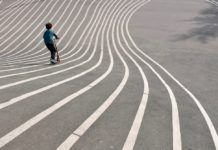For the last six years she has been working in one of the best-known Architecture Studios in Denmark as Project Architect in a team of 75 people. The story of our alumni Teresa Blasco is that of a meteoric international career that has taken her to prestigious studios in Paris, New York, and now Copenhagen.
But everything started here in Alfara del Patriarca, just twenty minutes away from Valencia…
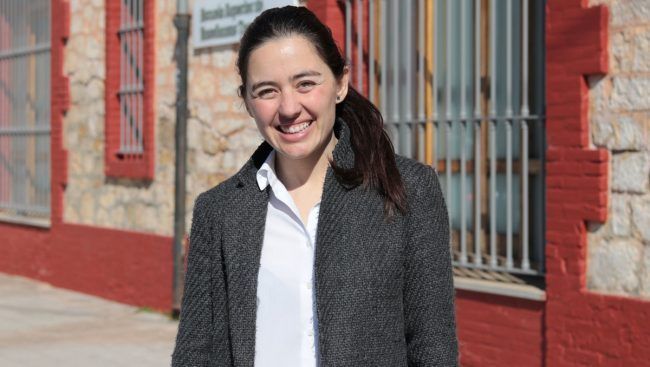
Teresa, tell us more about this exciting journey that has taken you from our Technical School to Dorte Mandrup Arkitekter, the studio where you are currently working.
It all started back in 2011, when I finished my Final Project and thus my degree in Architecture. I took a couple of work placements here in Valencia and then I left for Paris, where I had the opportunity to work as an architect in a studio. Although I must confess that I learned a lot and could take on some responsibilities from the beginning, I felt Paris was not for me and so I decided to take a new turn. I tried my luck in New York, which is a city I really love, but again I never really felt it was for me.
Teresa is currently leading a 20,000-square-meter project in the new city of Carlsberg, near Copenhagen.
It was then when I started looking for places that could be appealing to me from a professional point of view, and I soon narrowed the options down to two: Switzerland and Denmark. So I got down to work and started looking for studios, and I luckily got a Leonardo Grant which just paved my way to Copenhagen. It is relatively easy to find a trainee position in a studio if you have been awarded one of these grants, and I must say that the University helped me a lot with all the paperwork. In my case it was the gateway to Dorte Mandrup; I worked there as a trainee for around five months and soon after that they offered me a job.
An international career in Architecture
Joining a team of 75 people at such a young age mustn’t have been easy, or was it? Did you ever feel a bit lost or were you confident enough to face the challenge?
Denmark is indeed very different from Spain, also in architecture. As soon as I arrived, I had to force myself to think differently, but I never saw it as a problem. You just arrive with an academic mindset but you immediately realize that the professional world is a bit different.
I think this is something I learned during the time I spent in New York: there are hundreds of different ways of doing things, especially if you work in a multicultural context. The value of that difference is precisely what you need to learn but, of course, my academic background always played in my favor. I was able to adapt very quickly and, with everything I had learned here, it was just a fairly smooth process.
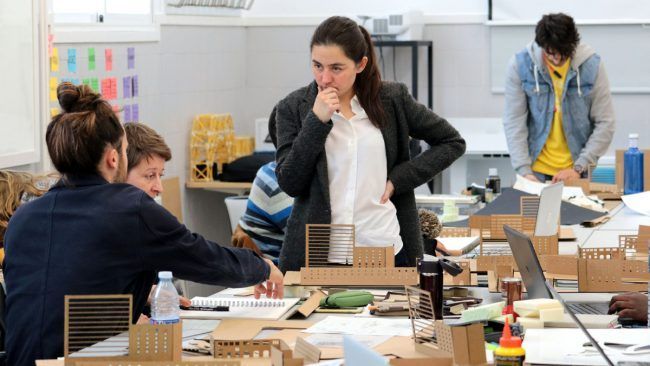
Who exactly is Dorte Mandrup, how would you describe her?
Dorte Mandrup is powerful. She is a woman who shows a sheer power in almost every aspect of her life: in her opinions, in her personality, in her working style.
She works as Creative Director and only founder of the studio, which is also one of the two major Danish studios that are run by women. I think Denmark is in this sense a more socially advanced country, as it is relatively easy to find women in managing positions. Gender equality is something natural here and in no case appears over imposed. In our team there are more women because there are simply more women who study Architecture and seek a job in that field. They are just architects and no women architects.
Her goal: larger teams for bigger projects
Tell us more about the personality of Dorte Mandrup Arkitekter…
The scope of our work is quite open, we work in many kinds of different projects. Of course there are certain things that we especially enjoy doing. On the one hand, I would mention the transformation of existing buildings. On the other hand, we like to work in unique places, in unusual plots with projects that can be more or less memorable. In the last few years we have worked a lot in places with high historical significance and World Heritage sites. Of course these entail more complex working processes.
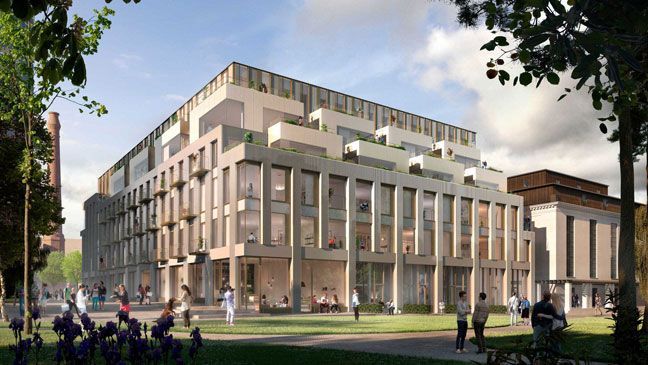
Talking about our portfolio, we have worked in many educational, cultural and housing projects… That social aspect is very important to us and is somehow present in all of our projects, but at the studio we like to adapt. One day we can be working in a housing project and the next day in a museum: that feeling of constant change forces you to be as ready to adapt and to learn as possible.
In your opinion, what defines the type of architecture made in Scandinavia that makes it different from the one done here in southern Europe?
If there is anything that really stands out is that Nordic architecture is very linked to public space. Here we also work on that matter, but perhaps in a different way: in Denmark you need to think a lot about how people are going to interact with the building, how they can enjoy the space. In general I believe that all projects, whether they are public or private, always take into account the use of public space. There is a kind of social pressure in terms of what a building means and represents to citizens.
“In Denmark building processes are much more controlled, not only as a matter of efficiency, but also from a practical and economic point of view”
Perhaps there is a greater architectural rigor here, compared to a more flexible approach in Nordic countries. It is possible that they just have less constraints when designing a building: the important thing will always be that social aspect, how people are going to use the building and how they will perceive that building.
In any case, these are different approaches to architecture. There are strict ways to think about it, others focus more on sustainability… In the end, I believe that all these trends should come together in your projects. And I think the key factor is to find that combination: combining our southern style with what they do in the north of Europe. This is what it’s all about, and it can also be applied to this international workshop I am participating in here.
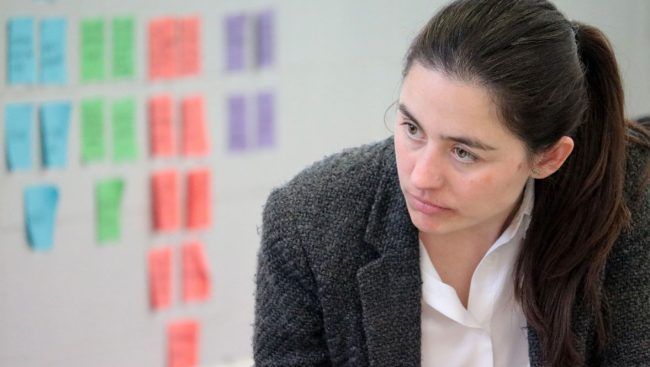 If you had to choose one of the projects you have worked in at Dorte Mandrup Arkitekter, what would that be?
If you had to choose one of the projects you have worked in at Dorte Mandrup Arkitekter, what would that be?
I would probably have to name the project I am working on right now in the new city of Carlsberg, in which I have been working for the last two years. It is very interesting because it combines an existing building with a new one. In addition, it is a mixed use project that includes commercial, housing and business spaces.
It also feels a bit special because of my role in it, as it is the first project that I have led from beginning to end. The size is just overwhelming, with over 20,000 square meters of construction site.
Will you meet the deadlines? How do these building processes work in Denmark?
We’ll meet the deadlines, that is for sure. Unlike the rest of Europe, construction processes are much more monitored in Denmark and everything seems to be much more under control. And it is not only as a matter of efficiency, but also from a practical and economic point of view. On the one hand, the climate determines when you can or cannot build, or if you need to stop the process in order to protect the site. In a country with such adverse weather conditions, this aspect has to be taken into account. On the other hand, building processes are designed to be as simple as possible: many of the pieces are prefab and are already built-in, which makes the construction much faster. Everything is much faster than here in Spain, for example.
A Danish architect that we should all learn from and a Spanish one whose work you admire…
There are so many! From the classics of Danish architecture, of course Arne Jacobsen. And just because it is the one of the first names to come to one’s mind doesn’t mean that it isn’t absolutely basic to know his work. Vilhem Wohlert would be another one, with his Louisiana Museum of Modern Art. Any student of Architecture should know about it. About the most contemporary, there are some very interesting studios like Vandkunsten, which back in the 70s did a lot of research on social housing and public space. Lundgaard & Tranberg is another studio that makes first-class architecture. In general, I would say that there is a great tradition in design and architecture in Denmark.
“Nordic architecture is closely linked to public space. that social aspect is basic, understanding how people will interact with the building”
If I had to mention a Spanish studio that I admire, I would say Nieto Sobejano. We have collaborated with them at Dorte Mandrup and there is a pretty close relationship between us. Personally, I have great respect for them and their work.
Any anecdote you can think of from your days at the University?
There are many anecdotes and special moments! For instance, when the Technical School took part in the Solar Decathlon Europe competition. Those were two years of very intense work that have really left an imprint in my life and my experience at CEU back in those days: the bond with my classmates, with my teachers… At that time, we all got really close to each other and learned a lot from every one. I think it was a very unique moment for our School.
A School that has undergone a great transformation in recent years, how do you see that change, do you notice anything different? Tell us how you would describe that #10YearChallenge of the ESET!
It’s totally different. That jump towards internationalization is so obvious and makes it so different from my student days. I see that multiculturalism as something normal in my daily life but I realize all the effort made by the School to make the ESET more international. And it is so enriching that I think all students should take advantage of it, regardless of their degree. It seems obvious, but it is just tremendously positive.
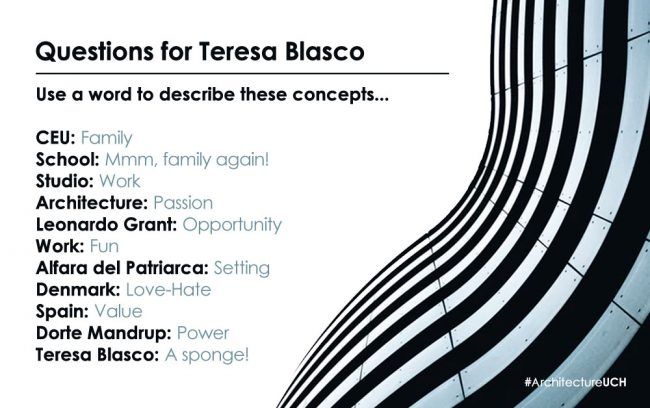
Although your career is more than consolidated, one could say that you are a non-conformist. Where do you see yourself in a few years, from a professional point of view?
I would like to continue working in all the projects that I have just started. Coordinating them, maybe being at the forefront of new projects, and making them increasingly complex. In short, working with larger teams to have a greater projection and controlling architectural projects from start to end.
To end our conversation, what advice would you give to an Architecture student?
Without a doubt, take advantage of all the resources at your fingertips: your mates from Finland, from Japan… Having that in your classroom is like having a library, it is very enriching. Being able to learn from what others see, blending it in with what you actually see and sharing that common vision. In short, understanding other ways of thinking and doing architecture. That is the most interesting part of our job.










